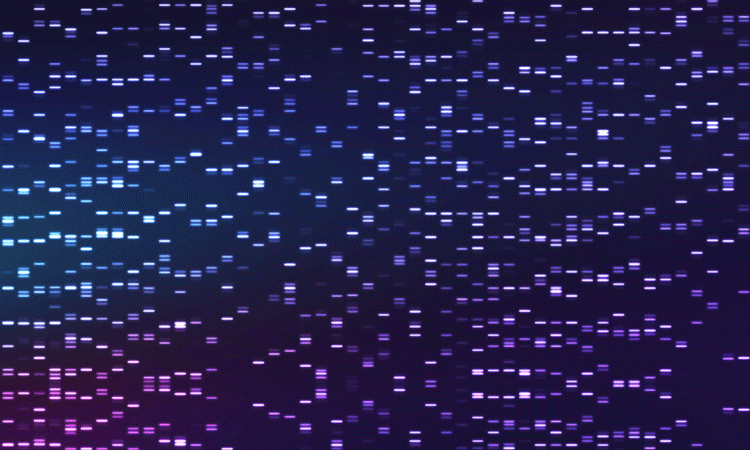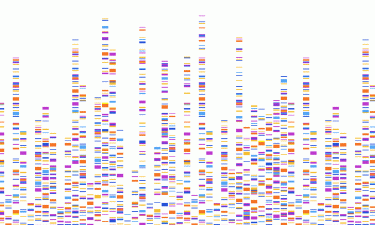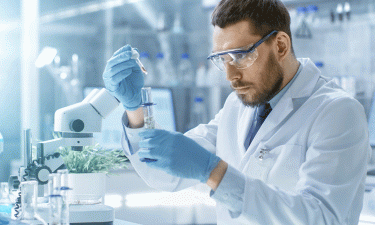A biosynthetic pathway to identify new drug candidates
Posted: 27 September 2019 | Victoria Rees (Drug Target Review) | No comments yet
A new process for identifying and biosynthesising drug candidates has been discovered by researchers at the Carl R Woese Institute for Genomic Biology.

Finding ways to produce drugs more efficiently and at lower costs is a significant goal for researchers. One route to achieve this is to use natural products to make pharmaceuticals.
A research team from the Carl R Woese Institute for Genomic Biology, University of Illinois At Urbana-Champaign, US recently discovered a potential pathway for biosynthetically producing drugs. The study was led by Howard Hughes Medical Institute (HHMI) Investigator Wilfred van der Donk and the work was supported by HHMI and the US National Institutes of Health.
Discovering a new pathway
According to the researchers, microbes have a great ability to produce unknown substances, which have the potential to be used within therapeutics.
Using a technique known as genome mining, the research team were able to search for compounds within natural processes. This method is used by labs currently, say the researchers, to find new antibiotics.

Studies have shown that proteins and most peptides are assembled using ribosomes, which follow instructions written in genes. Other peptide-based natural products are made via groups of specialised enzymes, which do not follow a template but instead create the same types of linkages and modifications repeatedly to make just one product.
These two different pathways for natural product biosynthesis are understood; but the researchers discovered a new process which combines the two.
“Unexpectedly in this work we discovered a system that is neither of these processes, but that borrows parts from both. We found it by doing searches for biosynthetic enzymes involved in biosynthesis of ribosomally-synthesised and post-translationally modified peptides (RiPPs),” says van der Donk.
While researching Pseudomonas syringae, which infects plants, the team found a cluster of particular genes. This included a ribosome which held the information for creating a peptide whilst another coded for an enzyme that could add a different amino acid onto the peptide chain. Van der Donk explains that they “worked on enzymes that dehydrate serine/threonine by first phosphorylating their side chains and then eliminating the phosphate,” to make their discovery.
…the current interest in engineering bacteria to have anti-cancer activity means that organisms can be made to work for scientists”
The researchers observed that this synthetic process works when a new amino acid is added to the peptide. It is then modified and then broken off, returning the original ribosomally-created peptide back to the starting step.
They concluded that the enzyme for the pre-existing peptide is used as a scaffold to continue making the natural product. Using this information, they then searched for these enzymes in protein databases, with an aim to find new antibiotics. They discovered that enzymes which lacked the phosphate elimination domain.
The process therefore yields an amino acid-derived small molecule, which has unknown properties; studying these can therefore highlight potential uses.
Imaging the molecule
Wanting to investigate this further, the researchers found that this kind of biosynthesis can be used to make a variety of natural products, including anti-cancer compounds.
Van der Donk says that the biological activity of the compounds they discover with this approach is unknown, as some “may be antibiotics, some antifungal, and some anti-cancer, but they may also have a function that is not useful for therapeutics and we currently cannot predict this.”
 The molecule that the team identified in their study was too unstable to be imaged using traditional techniques. This caused the team to reach out to HHMI Investigator and University of California, Los Angeles Professor of Biological Chemistry and Physiology Tamir Gonen, to confirm their findings. Using a technique called micro-electron diffraction (microED) for the first time, the team flash-froze microcrystals of purified substances. This allowed the team to determine the structures of the small molecules and discover their uses.
The molecule that the team identified in their study was too unstable to be imaged using traditional techniques. This caused the team to reach out to HHMI Investigator and University of California, Los Angeles Professor of Biological Chemistry and Physiology Tamir Gonen, to confirm their findings. Using a technique called micro-electron diffraction (microED) for the first time, the team flash-froze microcrystals of purified substances. This allowed the team to determine the structures of the small molecules and discover their uses.
Although the process allows researchers to discover new compounds and their uses, “the challenges of accessing these molecules by synthetic biology is whether the biosynthetic enzymes will be active in the heterologous host,” says van der Donk.
Therefore, once the new compounds are discovered their properties can be fully understood once they are imaged. This means that drug candidates can be identified.
Finding drug candidates
Now that the team are aware of this alternative pathway for synthesis, they have discovered other useful compounds. This includes the production of an anti-tumour compound by a soil microbe. Van der Donk explains that “we can discover new natural products that are made by a similar biosynthetic logic. We can mine genomes for their presence and then use synthetic biology to produce the final products.”
The researchers say that this will then have therapeutic value, as certain compounds can be discovered which can be used as drugs. “The hope is that by accessing enough of these compounds, some will have activities that may be useful to society,” comments van der Donk.
Prospects for development
The team say their findings could be used as a synthetic biology pathway for identifying and producing drug candidates. The cost-effectiveness of the process is high because of the natural product being used.
Also, the current interest in engineering bacteria to have anti-cancer activity means that organisms can be made to work for scientists.
…the enzyme for the pre-existing peptide is used as a scaffold to continue making the natural product”
“RiPPs are uniquely placed for synthetic biology because of the ribosomal origin of the precursor peptides. Since all organisms have ribosomes and aminoacyl-tRNAs, these molecules are well suited for heterologous production,” says van der Donk.
Therefore, there is great potential for this process and it can be used to find and create new compounds, with “hundreds of thousands of bacterial genomes available,” presenting many opportunities.
“We can automate this process to make large numbers of new compounds relatively quickly, but the slow part is to then determine the structures of the products which historically has been difficult and time consuming. MicroED has the potential to greatly accelerate that part of natural product discovery,” explains van der Donk.
Summary
Compounds which can be developed into treatments and that are cheap to produce are of great interest to the pharmaceutical industry. Therefore, this process of synthetic biology could have a very cost-effective use in drug discovery.
Van der Donk believes that “this technique is going to be a breakthrough method for natural product discovery.” The ability to synthesise new compounds quickly can speed up drug development, but it also means that drug candidates can be identified, improving the R&D process.
The findings were published in Science.
Related topics
Biopharmaceuticals, Biotherapeutics, Drug Discovery, Drug Discovery Processes, Genomics, Research & Development, Targets
Related conditions
Cancer
Related organisations
Carl R Woese Institute for Genomic Biology University of Illinois At Urbana-Champaign, Howard Hughes Medical Institute (HHMI), University of California - Los Angeles, US National Institutes of Health
Related people
Wilfred van der Donk







